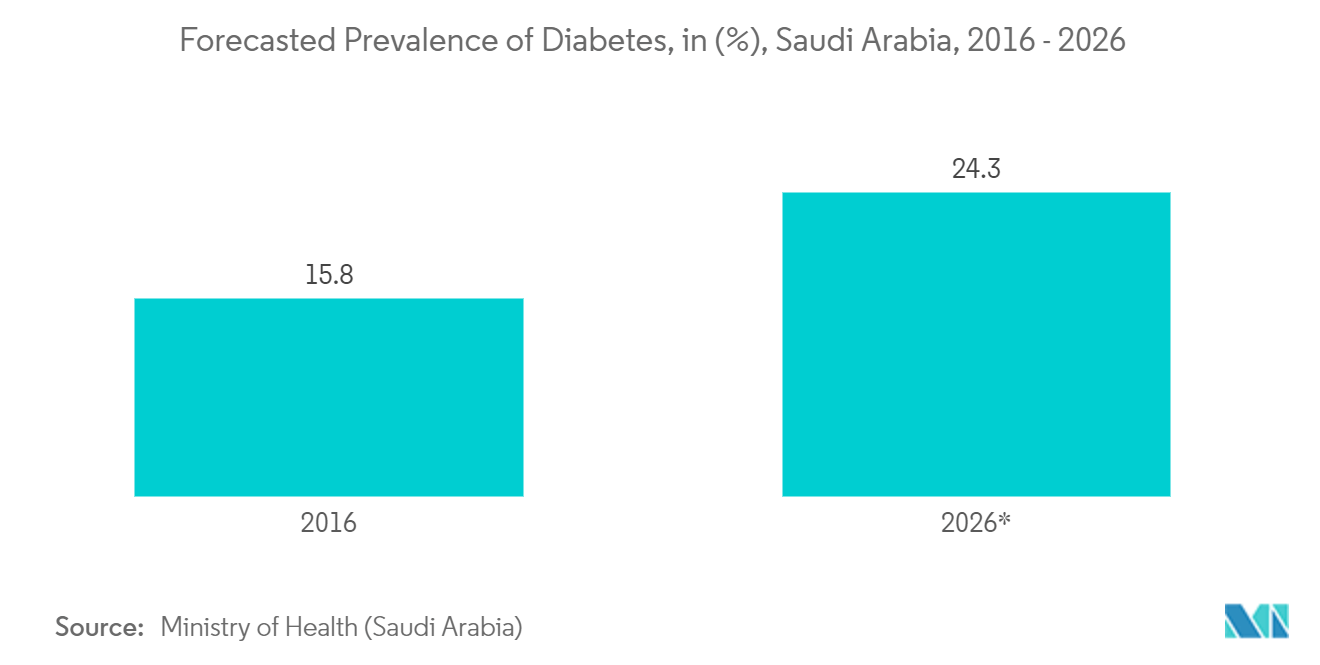Market Trends of Middle East And Africa Wearable Sensors Industry
The Healthcare Sector is Expected to Register Significant Growth
- Wearable sensors are widely used in the healthcare sector. They are arranged on a patient's body and can be utilized to closely monitor patients' physiological condition. Wearable medical sensors monitor the patient's vital body signs (for example, temperature, heart rate, blood pressure, and oxygen saturation). The emergence of various sensors in healthcare applications is gaining momentum through the increasing array of wearable vital sign sensors and place tags, which can continuously track healthcare personnel and patient status/ location in real time.
- In October 2023, Huawei entered a new era of stylish, health-focused, and sport-ready wearables by introducing a new line-up of smartwatches, freebuds, smart glasses, and MatePad in the UAE. The range of new devices, including the Huawei Watch GT 4, the new addition to the popular smartwatch series, the high-end Huawei Watch Ultimate Design, Huawei Freebuds Pro 3 high-fidelity TWS earbuds, Huawei Eyewear 2 smart glasses, and the Huawei MatePad 11-inch PaperMatte Edition and MatePad 11.5-inch PaperMatte Edition that offer a paper-like reading and writing with 97% light interference reduction.
- According to a survey published by AppDynamics in 2022 (a study of more than 12,000 consumers worldwide), most people in the UAE bought more wearable health technology or applications in the following 12 months. The survey found that 88% of respondents in the Gulf country intended to use medical wearables, like Fitbit or smartwatches, in 2023. Further, around 90% of respondents in the UAE wanted access to heart rate, blood pressure, heart rhythms, physical activity, and respiratory rate from a watch or other wearable gadget. The UAE respondents said they believed wearable technology could transform both personal and public health.
- The market is witnessing collaborations as companies partner to develop innovative integrated solutions by leveraging each other's capabilities. In November 2023, LifeQ, a company using globally recognized watch brands to generate personalized, clinical-grade health insights, partnered with AAIC Investment. LifeQ co-founder Laurence (Laurie) Olivier, CEO, made the announcement. AAIC Investment focuses on fast-growing companies in Africa's healthcare sector and is deeply committed to improving healthcare in Africa.
- To cater to the upsurge in demand for healthcare wearable sensors, in March 2022, BioIntelliSense, Inc., a continuous health monitoring and clinical intelligence company, announced its strategic collaboration with Mubadala Health, an integrated healthcare network of Mubadala Investment Company. The partnership incorporates BioIntelliSense's innovative remote care technologies with Mubadala Health's continuous care model to drive clinical workflow efficiencies, unlock data-driven clinical insights, and deliver a personalized care experience.
- Increasing health concerns like heart ailments, diabetes, cancer, and respiratory diseases in the region are likely to drive the population toward adopting wearable sensors. For instance, according to the Ministry of Health, Saudi Arabia, 24.3% of the adult population in Saudi Arabia is expected to have diabetes by 2026. Such factors are expected to boost the market's growth.

Saudi Arabia Holds a Significant Market Share
- Wearable Sensors are experiencing significant growth in Saudi Arabia. Wearable technology has become increasingly integrated into daily life and various industries nationwide, utilized for fitness tracking, healthcare monitoring, and industrial applications. According to the WHO, in 2022, Saudi Arabia's expenditure on healthcare totaled USD 60.7 billion. According to the report, the healthcare expenditure of Saudi Arabia in 2027 is expected to reach USD 77.1 billion.
- A dedicated focus on getting in shape, building the body's immunity, and managing stress drives the surge in the popularity of wearables in the fitness category. Smartwatches play a vital role by becoming extensions of the user's body and a smartphone accessory. These devices can be worn all day and work as the user's smart assistant to aid them in actively managing their health while exploring immersive application experiences.
- In March 2022, Huawei and SFA (Saudi Sports for All Federation) joined forces to promote advanced wearable devices designed specifically for runners. The SFA organized a marathon event to promote well-being and increase physical activity levels across the population in line with the Saudi Vision 2030 objectives.
- As a result, more than 10,000 runners participated in the inaugural marathon. Huawei gifted all marathon participants with a 200 SAR voucher to buy anything from the official Huawei website, such as the stunning HUAWEI WATCH GT Series, including the company's first professional running watch, the HUAWEI WATCH GT Runner, which has a wide range of health and well-being monitoring features as well as dozens of sport modes to help users level up their fitness. Such initiatives spread awareness about the latest wearable sensors to monitor health and fitness, thereby driving the growth of the market.
- The country's increasing number of smartphone users is expected to offer lucrative market growth opportunities as they enable wearable device integration. According to Eurostat, the number of internet users in Saudi Arabia in January 2023 was 36.3 million users, up from 35.8 million users in the previous year.
- Cancer patients are undergoing chemotherapy and radiotherapy as therapeutic treatments for their cancer conditions. Demand for wearable medical sensors is also increasing due to the rapidly growing population concerned about health conditions. According to the World Bank, the country's population may reach 45.1 million by 2050, with a 1.02% average annual growth. This increase in population is anticipated to boost the demand for healthcare services in the country.


